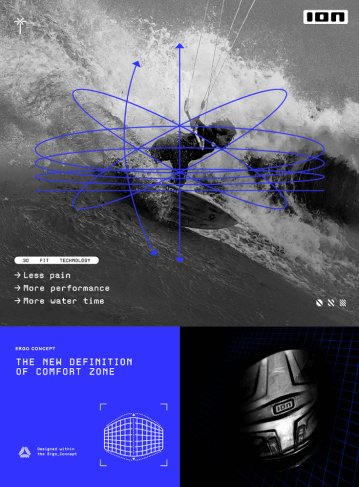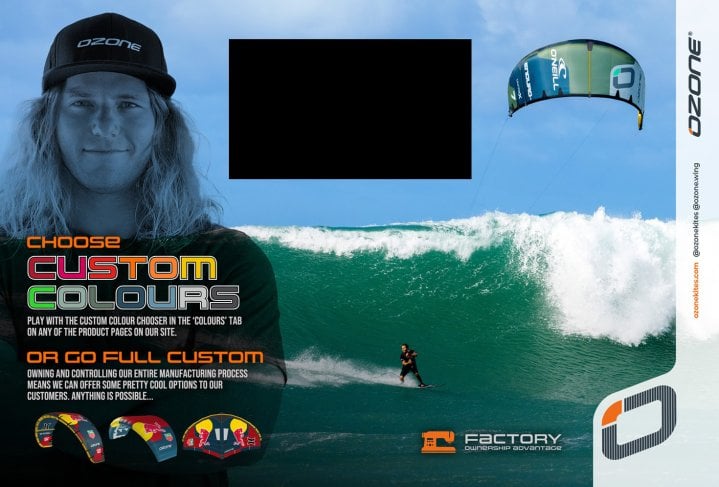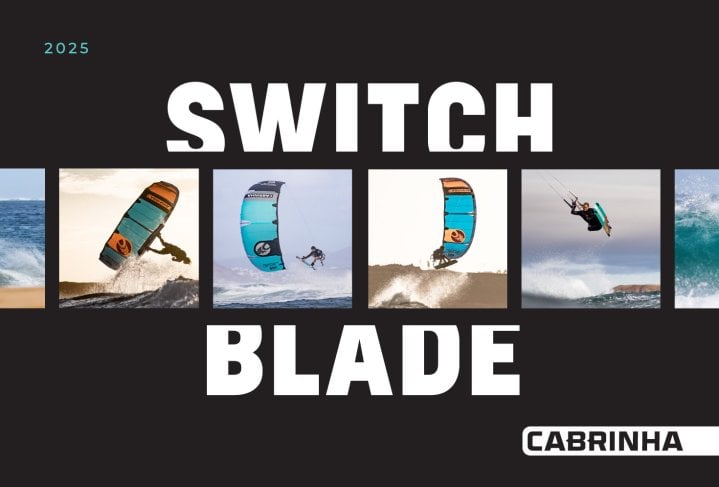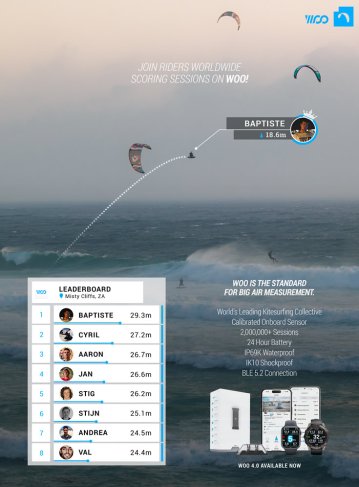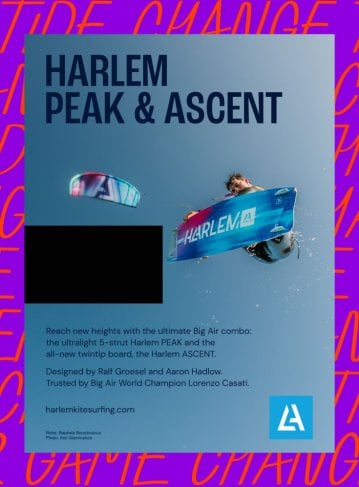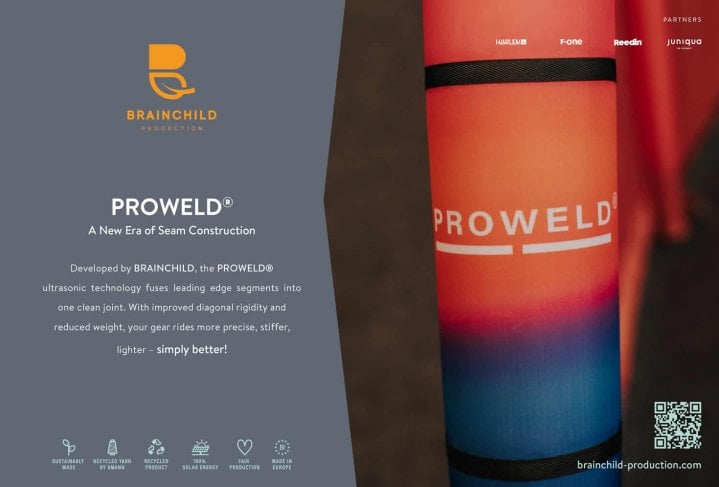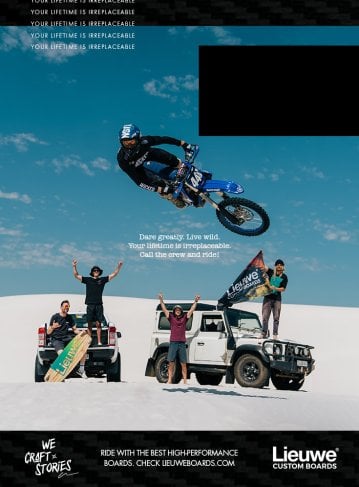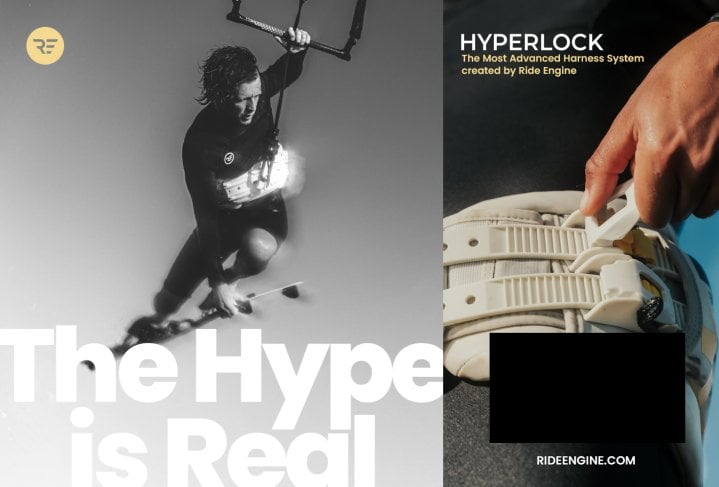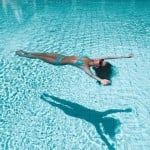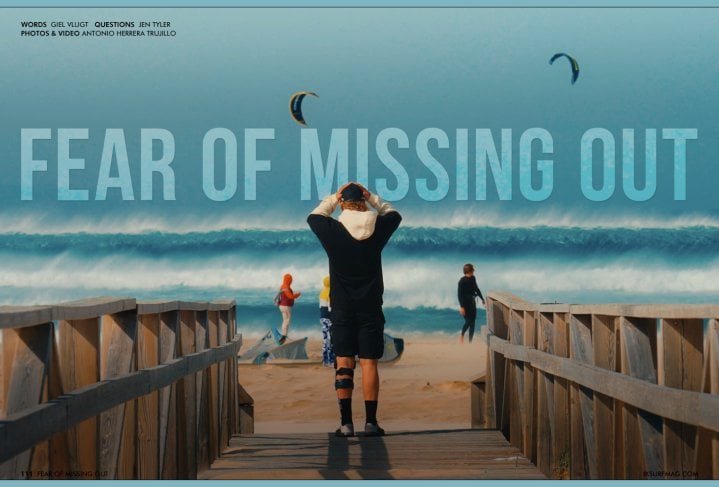
Fear of Missing Out
Issue 111 / Wed 25th Jun, 2025
Get ready for an inside look at the mindset, motivation, and recovery journey of one of Big Air’s most explosive riders. Jen Tyler sits down with Giel Vlugt to talk injuries, comebacks, world records, and what it really takes to stay at the top. From the lows of recovery to the highs of chasing new limits: this is Giel, unfiltered.
Giel, we just finished watching ‘Fear of Missing Out.’ How did the idea for the film come about, and what made you want to share this part of your story?
Together with my sponsor, Capital, we set out to create a documentary series that gives a real look into my life—not just the training and fun moments, but also the challenges and how I face them. Starting this journey while I was still deep in recovery made it clear what the focus of this first episode needed to be.
How did you and Antonio Herrera Trujillo first connect, and what made him the right collaborator for this project?
Antonio’s actually a good friend of mine—we met a few years ago playing basketball here in Tarifa. At the time, I was just stepping into the kitesurfing scene, and he was just getting started with his career too. That friendship makes it really easy to be myself in front of the camera. He knows how to make me feel comfortable, but also when to give me that extra push. In my opinion, he’s the best in the business!
What was it like being on the other side of the camera—raw, vulnerable, and not just riding?
Honestly, it was terrible—haha! I’m not used to showing my “vulnerable” side, and I usually have a pretty positive outlook even during the lows, so digging into the more negative side wasn’t easy for me. Normally, I’d avoid watching everyone kite in epic conditions if I couldn’t ride, but for the video, we went to check it out to capture my reaction. That part honestly felt like I was torturing myself!
Can you take us back to the moment of the injury—what happened, and what was your immediate reaction?
I was charging full speed at a wave—probably around 50 kilometres an hour—trying to hit it just right. But I was a bit too late, and the lip had already collapsed. It ended up slamming straight into my knee while I was still at full speed. I felt a lot of pain instantly, but I didn’t want to believe something was actually wrong. Funny thing is, every time I get injured, deep down I know it right away… but I always try to convince myself it’s nothing serious.
Did you know right away it was serious, or did it take time to realise the impact fully?
I knew it wasn’t good news, but being the positive person I am, I kept telling myself it was just a bit sore and would clear up in a few days… little did I know what was really ahead.
How did your background—from a family of physiotherapists- shape your understanding of what needs to happen next?
Knowing how important it is to treat an injury properly from the start, I took it seriously right away. But just two days later, I had to travel back to Holland, which obviously didn’t help the recovery. Luckily, I had a lot of support—Ruan Retief in Cape Town helped me out massively right after it happened, and I also had a few video calls with my family, which made a big difference.
What were the biggest physical hurdles you faced during recovery?
The first few days after the injury were tough—my knee was incredibly sore and stiff. But after about a week, I started to get a bit more mobility back. Honestly, this injury has been more challenging mentally than physically.
Injuries can be just as tough mentally—how did you stay motivated during the darker moments?
I always try to focus on the positives. Instead of stressing about what I can’t do, I shift all my energy to what I can do. Keeping my mind busy with other things is key—if you’re occupied, there’s no time to feel down about the situation… haha!
Were there any specific people, routines, or habits that kept you grounded during the most challenging times?
When you’re injured but fully committed to coming back stronger, it honestly becomes a full-time job. At one point, I was doing hyperbaric chamber treatments three times a week, physio four to five times a week, hitting the gym daily, eating home-cooked, unprocessed meals every day, and cycling every other day too. Knowing I was doing absolutely everything I could gave me a real sense of purpose and kept me motivated and incredibly positive throughout the process.
What was your first session back like, emotionally and physically?
I was incredibly nervous before getting back on the water and told myself I’d be happy just riding up and down. But after about 50 metres, a perfect kicker popped up—and without thinking, I went for a big jump. As I took off, muscle memory kicked in, and I looped the kite into a rotation. That moment gave me such a massive boost—it was exactly what I’d been missing for the past two months. I stuck to an hour-long session, just like I’d agreed with Curro, my physiotherapist in Tarifa. My muscles were cramping for days after, but it was totally worth it!
Has your mindset changed since the injury, either in training, competition, or life?
No, because I genuinely believe that if you give it everything you’ve got, there’s no reason to be unhappy with the outcome. At the end of the day, doing your absolute best is all you can control—and that in itself is something to be proud of.
Do you still feel the same drive to push boundaries, or has your focus shifted?
Absolutely! I can’t wait to get back out there and push my limits again. That said, I also want to showcase more of what kiteboarding is about beyond just competitions. For me, kitesurfing is the perfect way to explore incredible places and connect with people around the world. My focus has shifted a bit—not because of the injury, but because I truly believe there are still so many stories in this sport that deserve to be told.
Are you still chasing the world record for the highest jump?!
Oh yes, it will be mine one day. Mark my words!
What’s next for you—competition, content, or something new?
I really believe this documentary series is going to be something special. We’ve got tons of ideas and some incredible locations lined up that we can’t wait to share with you all. So keep your eyes peeled—we’ll be posting updates and episodes on both my Instagram and YouTube channels!
What message did you hope other riders would take away from this documentary?
This episode, in particular, is all about showing the highs and lows—but more importantly, how to handle them in the most professional way possible. It’s about taking things seriously, listening to your body, and moving at the pace it allows. Don’t get caught up in what others are doing or worry about what you’re missing out on. Accept where you are, make the most of it, and go kick ass!
Thanks, Giel - It’s been a pleasure!
Thanks, Jen!
Videos
By Jen Tyler
Italian/Egyptian Jen Tyler grew up on the sandy beaches of the Red Sea and has been on the IKSURFMAG & Tonic Mag team since 2017.


